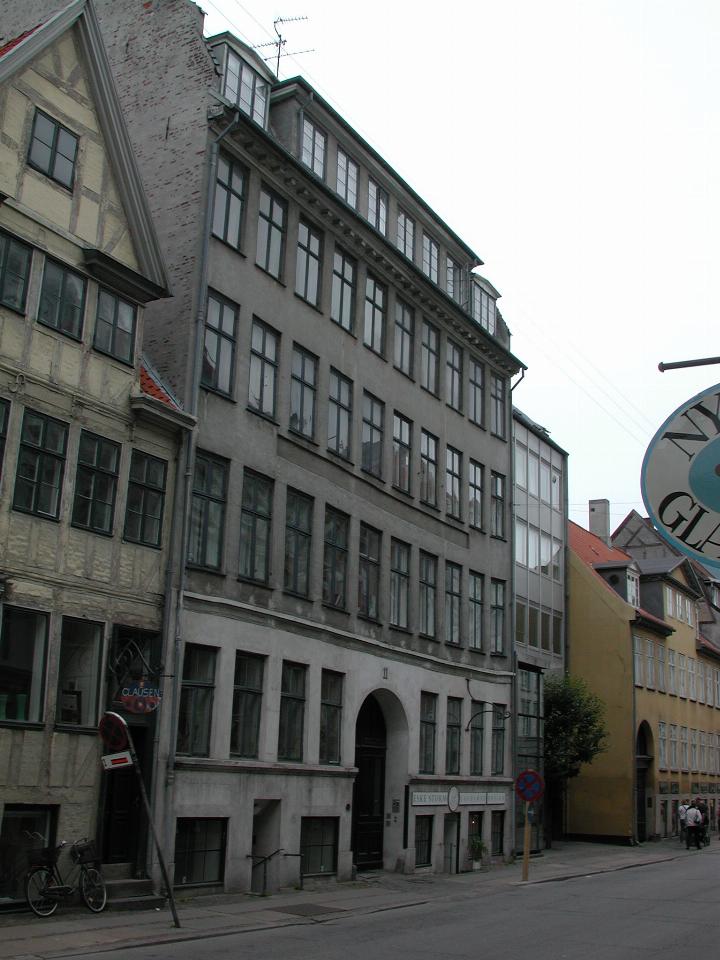
After leaving Nyhavn I started walking the couple of blocks back to our hotel to plan the rest of the afternoon's activities.

Something about this building didn't quite look right.
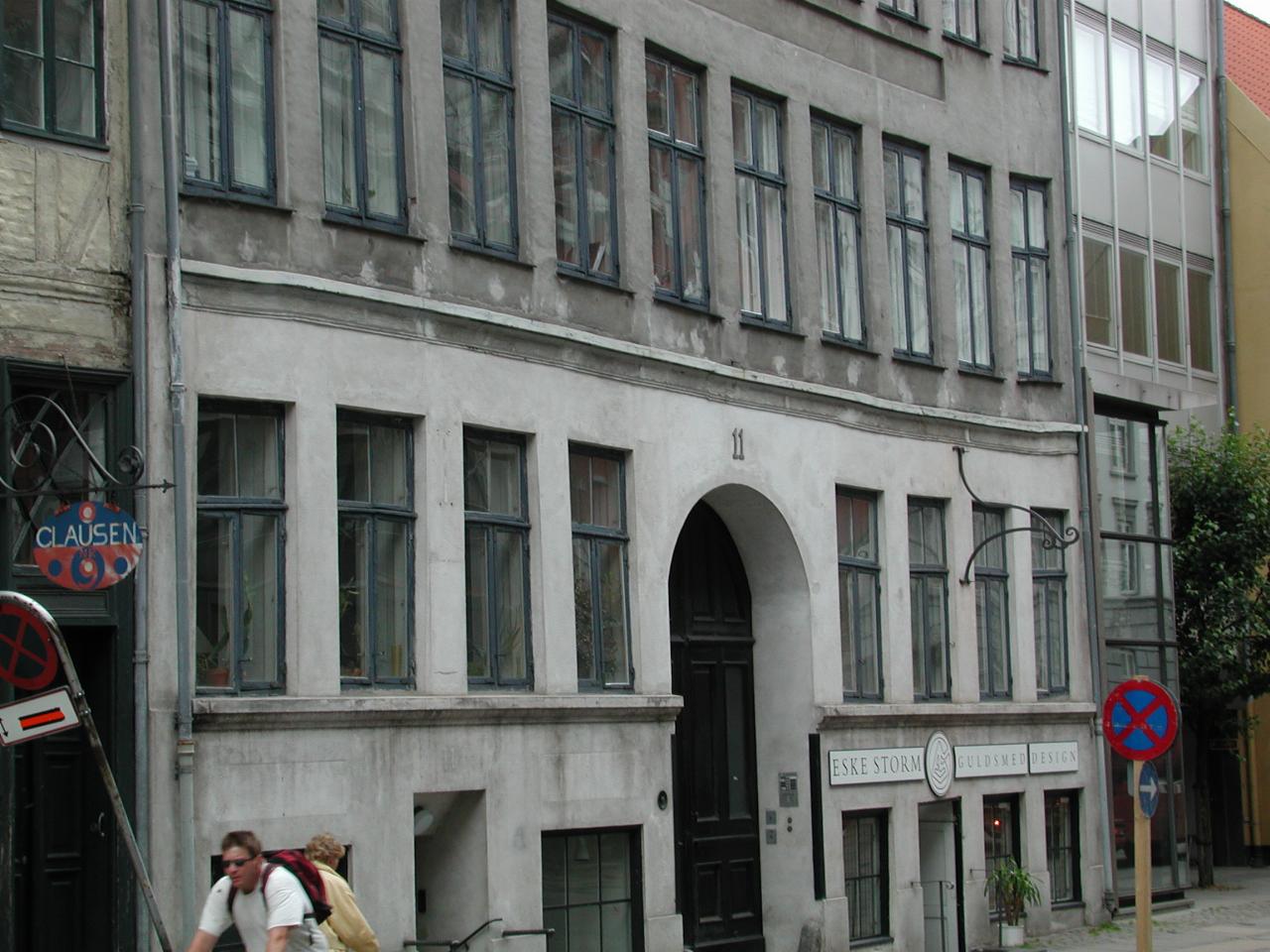
Ah, yes, it's not exactly "regular". Note especially the line just above the second floor windows, at the base of the darker finish. I recall the tour guide saying that this is not a solid area for building, so perhaps the foundations are compressing. Still, I'm not sure I'd want to be in a building like that. I noticed several with this "feature".
After consulting maps and guides, it seemed like a good idea to head towards the Frihedsmuseet (Freedom Museum), which details Danish resistance to the German invasion during World War II. There was only an hour before closing time, and I wished I had more time, but decided to go ahead anyway, as I might not be able to return another day.
The museum was quite interesting, as the Danes saved 7,000 Jews from the death chamber by hiding and smuggling them to Sweden. There was quite a bit about the sabotage carried out against Germans too. And I also spoke to an amateur radio operator working in the museum. He was using Morse code, and was "talking" to an amateur in the UK. The museum has several WW II vintage radio sets used for illicit communication with Britain.
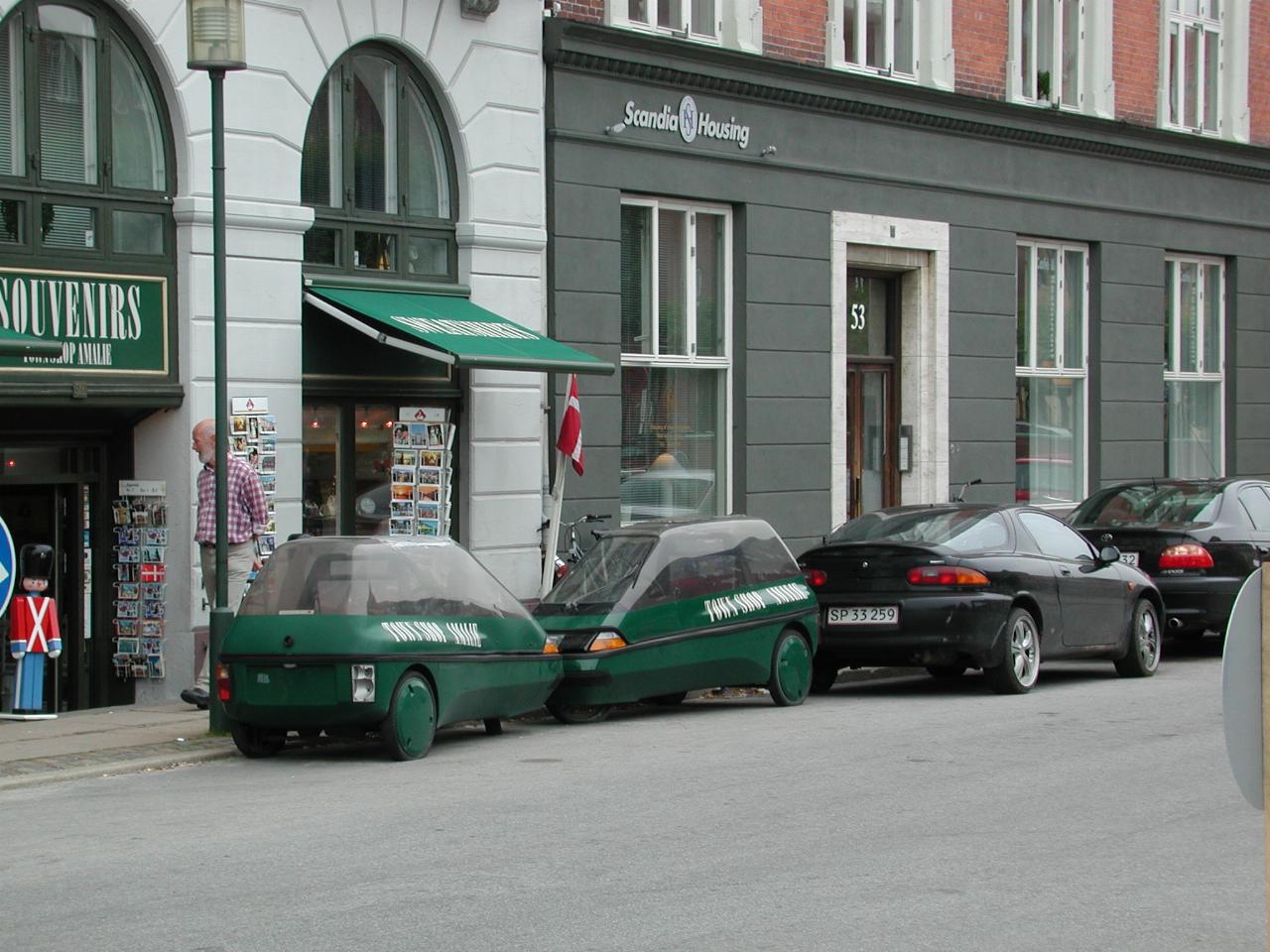
A couple of cute little cars. I presume they're some sort of delivery vehicle, but don't know for sure.
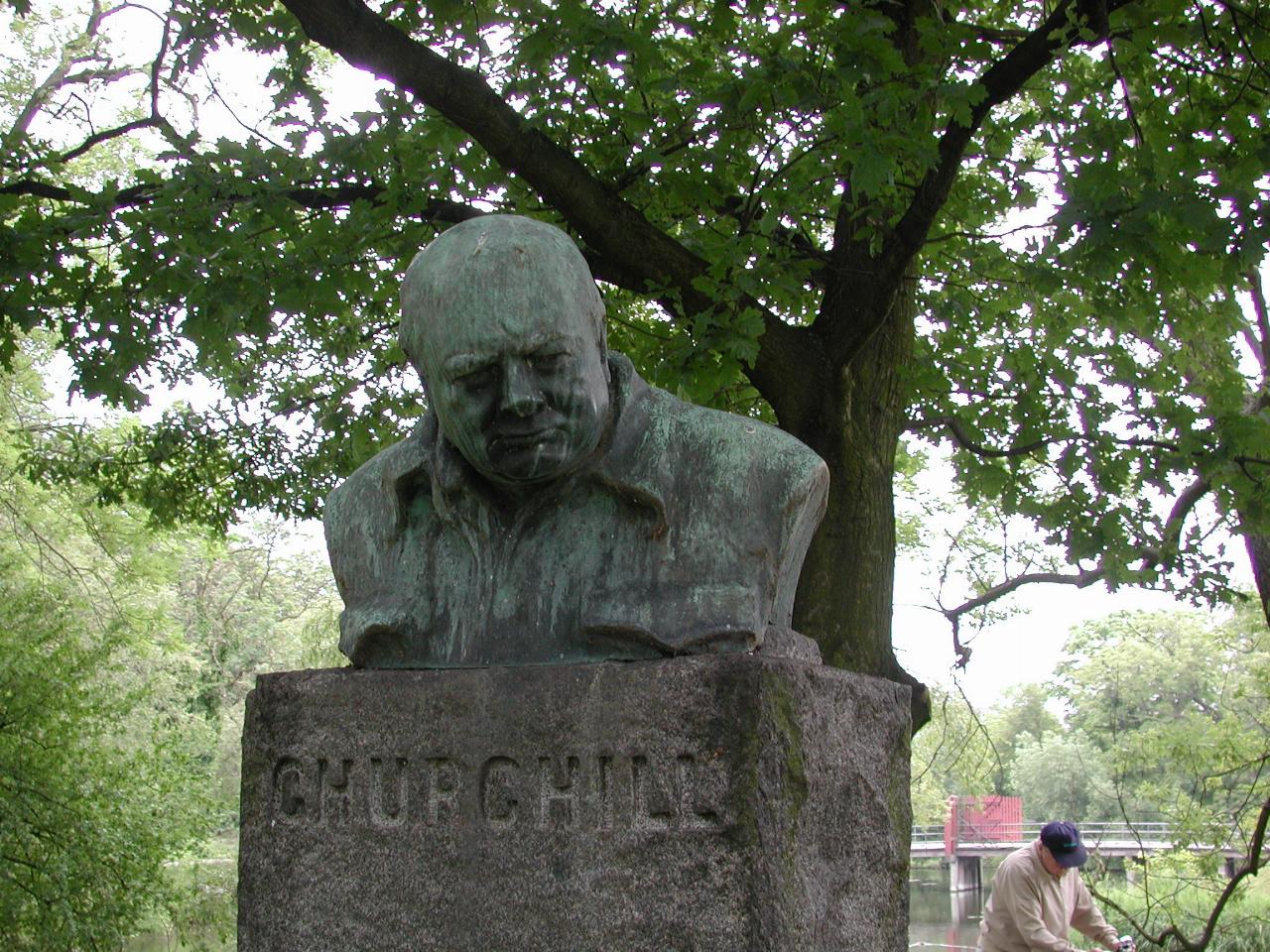
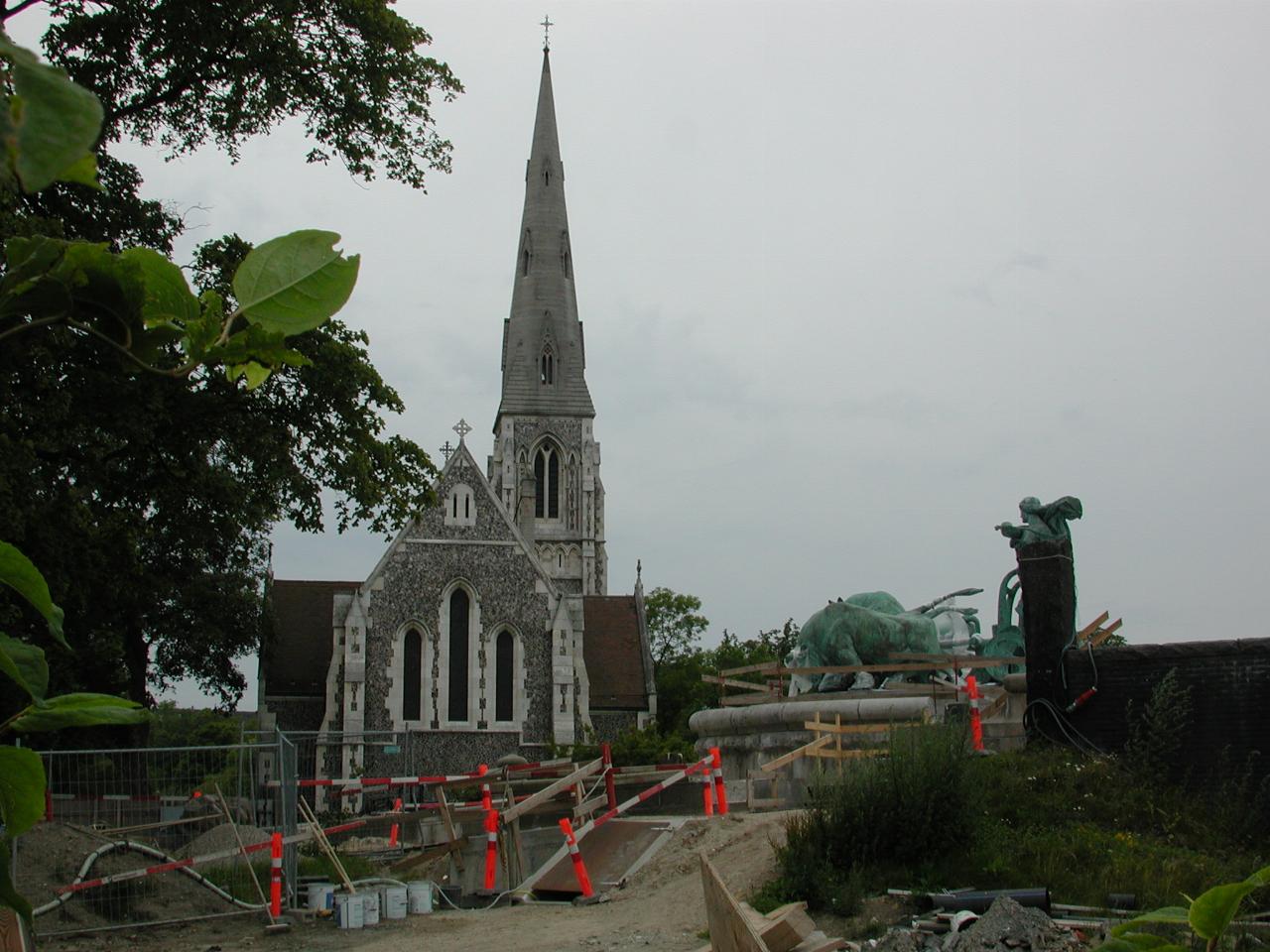
The park includes a British church, St. Albans, the only Anglican (or Episcopalean) Church in Denmark. Curiously, despite the proximity to the UK, it's actually part of the diocese of Gibraltar! The fountain in the foreground is the Gefion Springvandet.
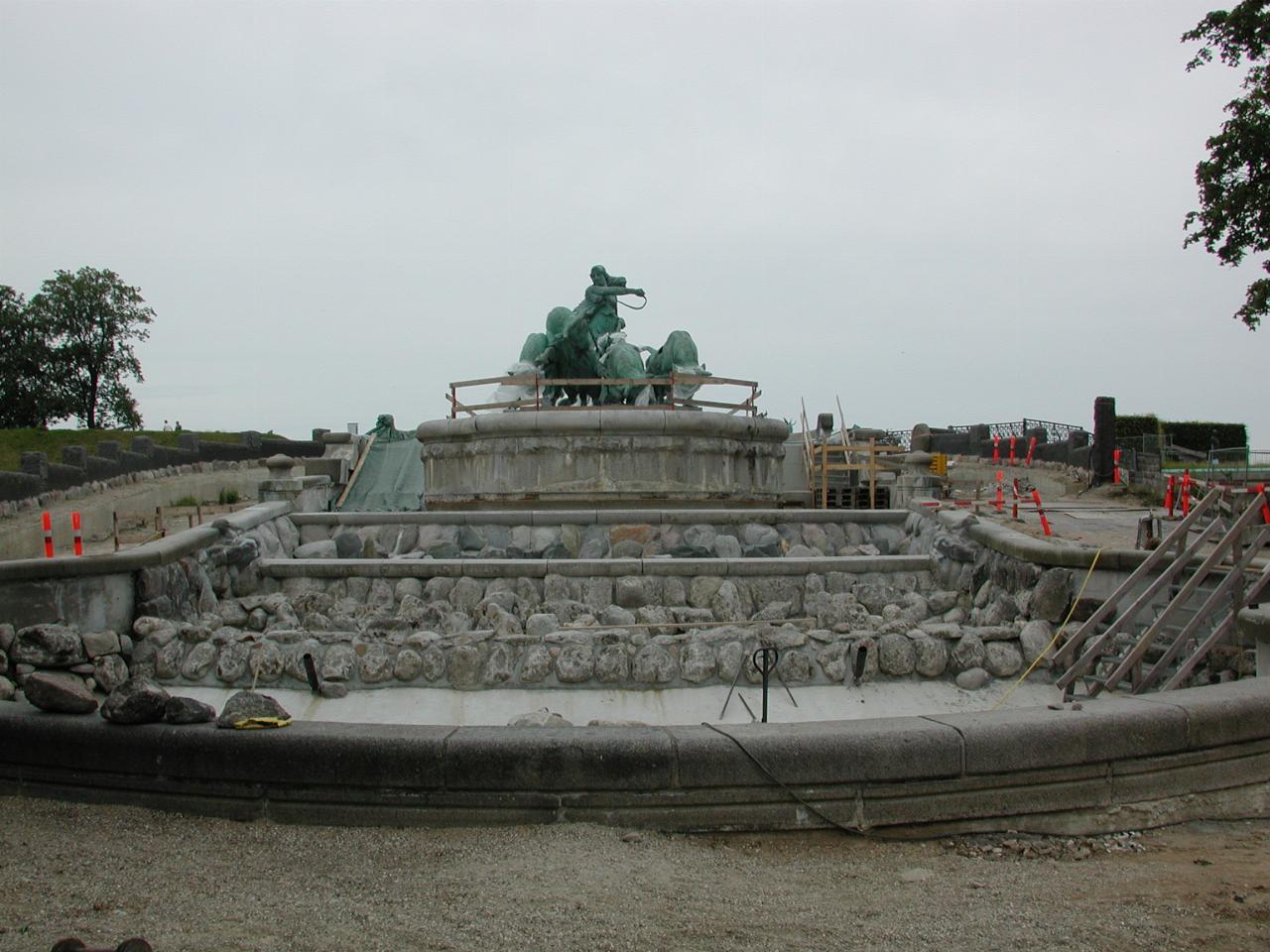
The (dry) Gefion Springvandet, which is obviously undergoing renovation.
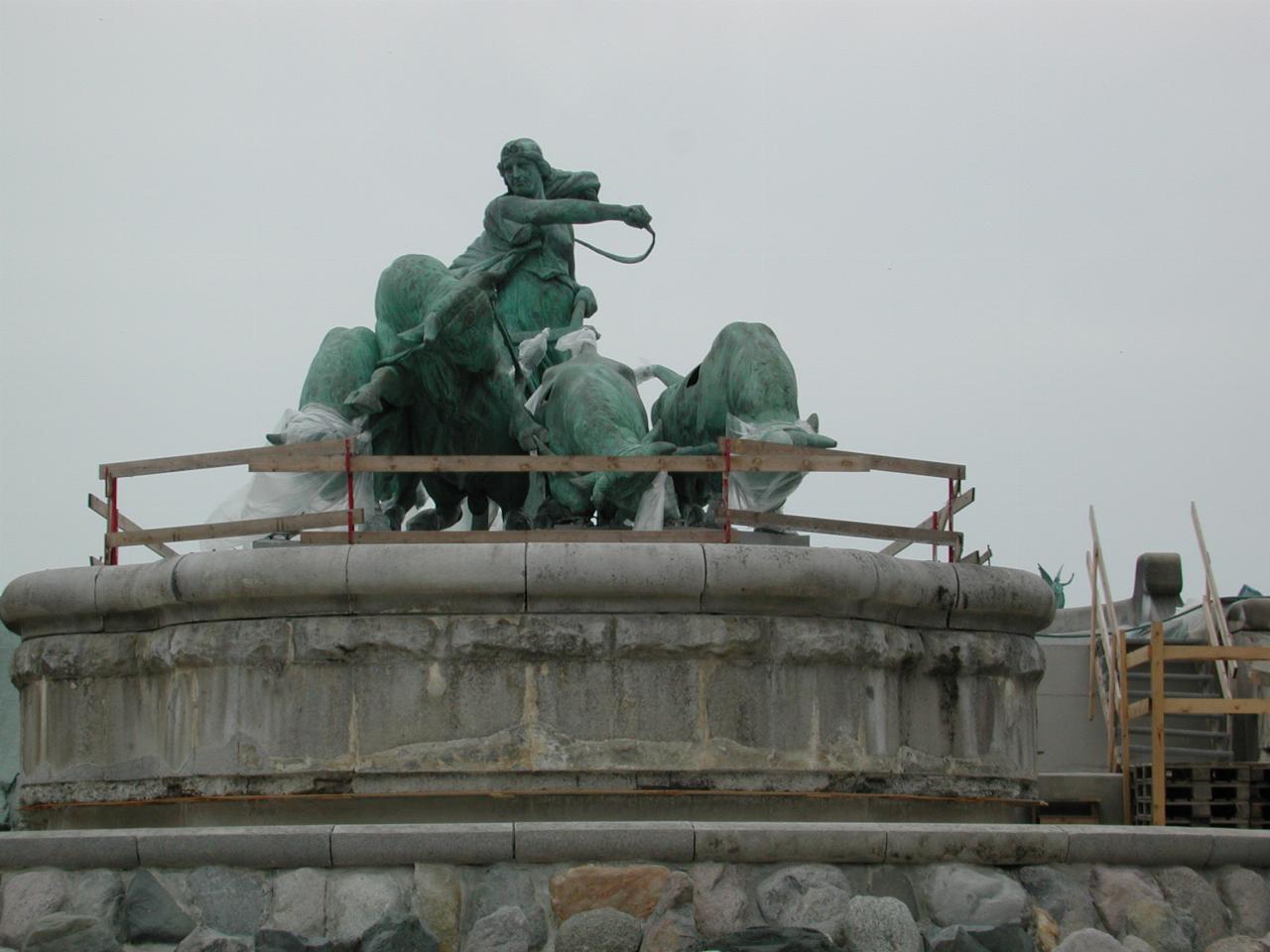
A closer view reveals a bit more of the story. The goddess Gefion was promised as much of Sweden as she could plough in a night. The story goes that she changed her sons to oxen and used them to portion off what is now the island of Sjælland. Sjælland, or Zealand, is the island on which Copenhagen is located!
And so the day was drawing to a close, and it was time to head back to the hotel. But, always on the lookout for a good photo, I returned via Amalienborg.
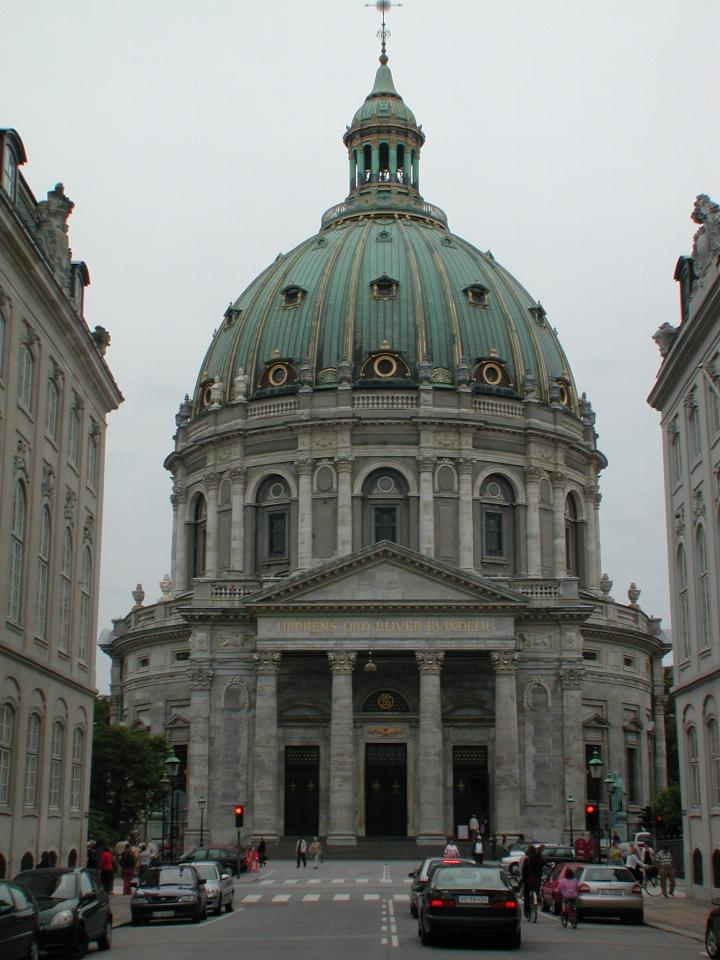
Marmorkirken (Marble Church), or more correctly Frederickskirken, which was begun in 1749, then work was halted from 1770 to 1874 due to lack of money. Final completion and dedication was in 1894. It is built of Norwegian marble, which apparently is expensive! Our guide mentioned that it was modelled after St. Peter's Rome. Although, of course, St. Peter's has a basilica underneath the dome!
Upon returning to the hotel I decided to have a quiet night, and considered where to eat. I settled on Cafe Sophie, just next door to our hotel. I had a nice lamb dinner - I do tend to pig out on lamb overseas, and this was a test meal. The lamb was good.
After that, it was time for bed to catch up on missing sleep.